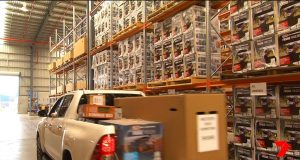From Matt Hodson of John Crawford Marine
If you’re buying a boat privately, you don’t need to be an expert to do some visual checks, just a bit of common sense!
Starting at the front of the boat, have a look at the winch on your trailer. Is the strap perishing or looking tired? Is there any rust on the winch itself?
Then kneel down and have a look down the keel of the boat making sure it’s nice and straight. Make sure there’s no sign of the aluminium fatiguing or getting hollow spots in it. Check for any corrosion or signs of repairs (if it’s a fibreglass boat you may notice discolouration). Repairs aren’t necessarily a bad thing by the way but if you do notice signs of repair, it should prompt you to ask questions about what happened.
On the trailer itself, again you’re looking for corrosion, rust primarily. Many of the new trailers are aluminium but they still have metal and steel components so if you’re seeing steel and it’s rusty, you’ll want to have a closer look at it to make sure that it’s not structural.
As you move down to the rear of the boat, you can then start to look at things like the clips and clears. Take some of the press studs off if there are any to check for any signs of corrosion underneath and make sure they’re all working fine. Then look for any damage down the sides of the boat.
Moving down to the tyres on the trailer, you want to check for cracks on the walls of the tyres or on the tread. Also, check the quality of the mudguards and things like the springs.
If the trailer has brakes, check their condition. You don’t need to be a mechanic to see if something’s rusty or not.
Then you come down to the end of the boat, and the power plant. Here, there are some visual checks you can do, but our recommendation is to get a professional to check out all those things you won’t be able to tell. For example, you might think you can rely on the hours to tell you whether the motor is in good condition, but the hours aren’t going to tell you whether there might be water in the gearbox or whether the motor’s been over-revved, had a lack of oil, or the wrong fuel.
A professional will be able to check the computer for any history that might cause an issue.
What you can look at is visual signs of corrosion or damage. You can check the propeller if you spin it and make sure there’s no damage there.
Hopping into the boat now, have a seat in the skipper’s area and turn on all the electronics. Work your way through the switches, the sounder, the stereo and just make sure everything is in order there.
While at the helm, have a good look at the builder’s plate also and check out how big the motor can be and how many people it can have on board. It’s very important to adhere to these rules.
If you’d like to have a professional come out and help you decide on your dream boat, contact John Crawford Marine.
John Crawford Marine
1029 Manly Road, Tingalpa
3890 2322











